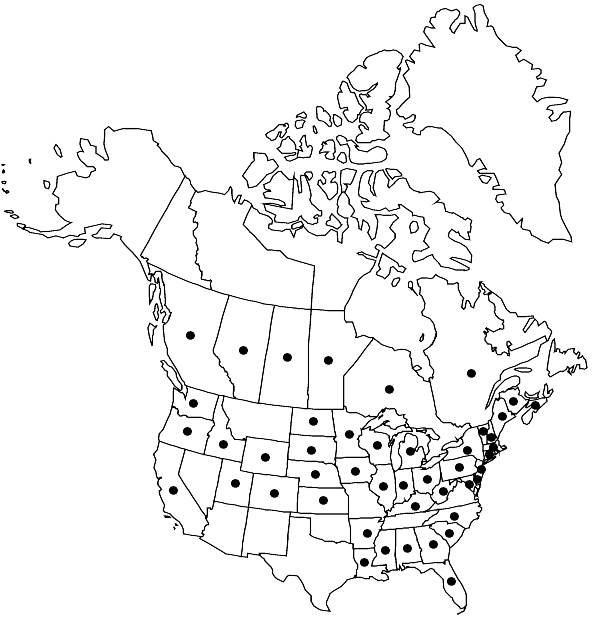Physcomitrium pyriforme
Linnaea 11: 80. 1837,.
Plants light green or yellowish green. Stems 0.2–15(–25) cm. Leaves obovate to ovate-lanceolate, distal leaves 2–5 mm; margins toothed, sometimes nearly smooth distally; percurrent to rarely short-excurrent. Specialized asexual reproduction absent. Seta (1–)6–15(–30) mm. Capsule exserted, 1–3 mm, globose-pyriform when young, highly variable in shape when old, urceolate to pyriform; neck short, distinct; exothecial cells irregular hexagonal; suboral cells consisting of 5–17 rows of rectangular cells. Spores (24–)46–60(–90) µm, papillose.
Phenology: Capsules mature late fall–spring.
Habitat: Wet soil in disturbed places
Elevation: low to high elevations
Distribution

Alta., B.C., Man., N.B., N.S., Ont., Que., Sask., Ala., Ark., Calif., Colo., Conn., Del., Fla., Ga., Idaho, Ill., Ind., Iowa, Kans., Ky., La., Maine, Md., Mass., Mich., Minn., Miss., Nebr., N.H., N.J., N.Y., N.C., N.Dak., Ohio, Oreg., Pa., S.C., S.Dak., Utah, Vt., Wash., W.Va., Wis., Wyo., Mexico, Eurasia, Africa, Australia.
Discussion
Physcomitrium pyriforme is morphologically variable and widespread across the continent. Plant size, leaf characters, and shape of the capsule vary from place to place and often within populations.
Selected References
None.